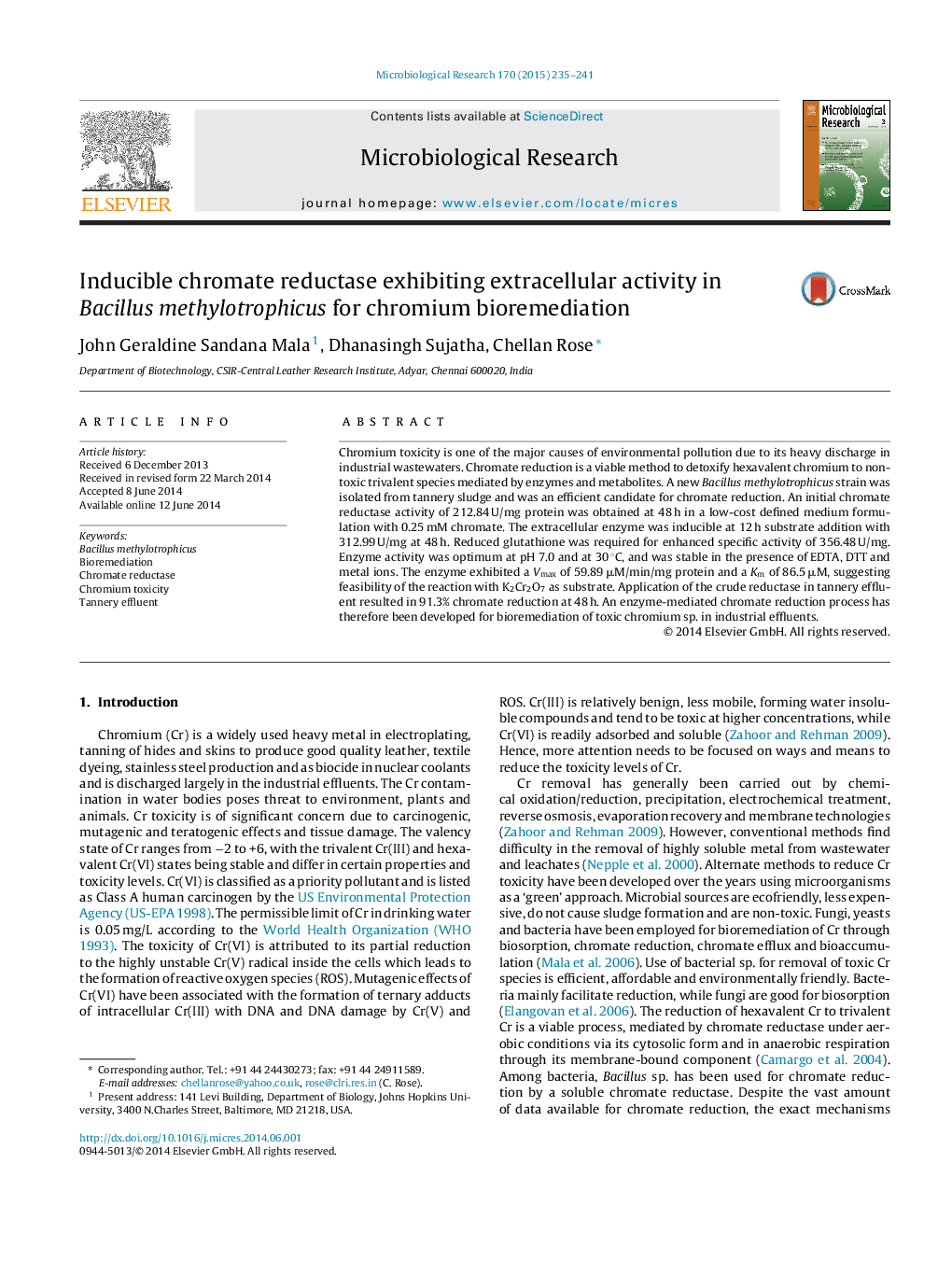| Article ID | Journal | Published Year | Pages | File Type |
|---|---|---|---|---|
| 2092143 | Microbiological Research | 2015 | 7 Pages |
Chromium toxicity is one of the major causes of environmental pollution due to its heavy discharge in industrial wastewaters. Chromate reduction is a viable method to detoxify hexavalent chromium to nontoxic trivalent species mediated by enzymes and metabolites. A new Bacillus methylotrophicus strain was isolated from tannery sludge and was an efficient candidate for chromate reduction. An initial chromate reductase activity of 212.84 U/mg protein was obtained at 48 h in a low-cost defined medium formulation with 0.25 mM chromate. The extracellular enzyme was inducible at 12 h substrate addition with 312.99 U/mg at 48 h. Reduced glutathione was required for enhanced specific activity of 356.48 U/mg. Enzyme activity was optimum at pH 7.0 and at 30 °C, and was stable in the presence of EDTA, DTT and metal ions. The enzyme exhibited a Vmax of 59.89 μM/min/mg protein and a Km of 86.5 μM, suggesting feasibility of the reaction with K2Cr2O7 as substrate. Application of the crude reductase in tannery effluent resulted in 91.3% chromate reduction at 48 h. An enzyme-mediated chromate reduction process has therefore been developed for bioremediation of toxic chromium sp. in industrial effluents.
